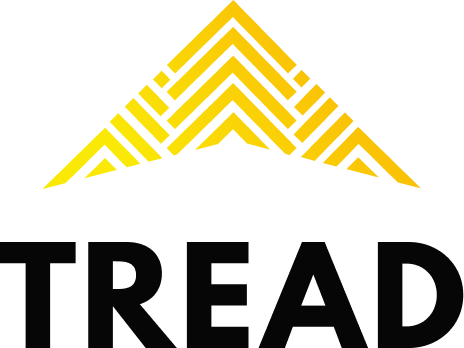How to Use the Critical Path Method in Construction
Most construction projects are very complex, with many overlapping and connecting tasks. It is important to have effectively managed projects so they can be done on time, with proper documentation and record-keeping. This is why it is essential to have accurately planned projects so they can be managed effectively and why many construction companies use the critical path method.
What is the critical path method in construction?
The critical path method in construction is a method of project scheduling that breaks down required activities using a diagram to calculate the duration required to complete each activity. The critical path method, or CPM for short, is sometimes referred to as critical path scheduling. It’s commonly used by project managers to accurately plan construction projects.
Are you ready to simplify your critical path planning and gain more visibility into your operations? Request a free demo of Tread’s construction fleet management software today.
How do you identify a critical path?
Critical path is determined by a detailed network diagram that takes into account each activity, its duration, predecessors, and lag. The critical path is the sequence of activities that are essential (critical) in order to complete the project.
What is a critical path diagram?
A critical path diagram is a visual planning tool that represents all of the construction activities required to complete a project. The diagram takes into consideration each activity’s duration, preceding activity (how each activity related to another), and lag. The diagram allows for a project to visually be broken down into activities, which are often depicted in boxes.
There is a network of lines between the boxes (activities), which show exactly how each activity is connected and the inter-connected flow that is required to complete a project.
Why is the critical path method used?
Using the critical path method to map out each project’s activity, each activity’s predecessor, and lag allows project managers to calculate the total required duration of a project.
The CPM is then used to identify the critical activities (critical path) that are needed to complete the project that is being planned. Non-critical activities are also listed on a critical path diagram. These are activities that have more flexibility on time and will not have a major impact on the project. Project managers are able to organize critical and non-critical activities and consider different options for each. For example, they can consider a scenario where one activity takes longer than the company predicts and plan for how this would impact the project as a whole.
CPM also allows project managers to compare projects. With this planning method, they can compare project schedules, which projects are behind schedule, which are ahead, and why they got there. Project managers can apply these insights to other projects to proactively maintain schedules.
When project managers can identify the most essential activities required to complete a project, they can better plan the start and end dates for each activity. The CPM forces a construction project team to think critically about each project and create a well-thought-out plan that identifies the most effective activity sequences.
How is the critical path method applied in the field of construction?
Construction projects can be complex and require a great deal of planning. CPM assists project managers to ensure that construction projects are completed on time and within budget. When a construction contract is signed, project managers are able to use the CPM to effectively plan and prepare for the upcoming project. They are able to break down all the necessary activities and slot them into the diagram, connect their interdependencies, estimate activity durations, and find the critical path to complete the project. Project managers can also use CPM to manage the project as it unfolds. They are able to update the diagram with actual start and finish dates for each activity and make adjustments where necessary.
CPM also helps construction site managers effectively manage each project activity on site. Once the project begins, site managers are able to use the CPM to effectively manage their teams and the tasks required to complete the project. They are able to use the CPM to stay on-track and on-time. It can even be shared with sub-contractors so they can get a better understanding of what is needed to complete the project.
What activities in construction is CPM used for?
Construction projects can use the critical path method for nearly all activities. The CPM maps out each activity required to complete the project, including the critical and non-critical activities. This could include activities like hauling materials, pouring concrete, paving, and more.
Can a project have no critical path?
No. The premise of a critical path is the sequence of activities (or activity) that is required to complete a project so, to have no critical path, there would need to be no project.
Can a project have two critical paths?
No. A project can have a number of activity paths but there can only be one critical path. Since the critical path really is the most essential path of activities that need to be accomplished to complete a task.
How to create a CPM schedule
Creating a CPM schedule can be done manually or with the assistance of a scheduling system; however, the same basic steps are followed every time.
The 5 steps to creating a critical path method schedule are:
- Identify each specific activity.
- Estimate each activity’s duration (including start and end dates).
- Determine activity sequences and dependencies.
- Crash your schedule to map out the network diagram and overlap activities that can happen at the same time.
- Identify the critical path.
It is imperative that critical path diagrams be updated as needed and as the project unfolds to show progress and stay organized.
How to update the CPM diagram
Updating the CPM diagram will vary depending on the program being used.
Pro tips when updating the CPM diagram:
- When updating the diagram, it is important to save the original or previous document so it does not get lost and make the updates in a new version.
- The most essential updates that should always be made in the CPM diagram are the actual start and end dates of each activity. This ensures the diagram is up-to-date, accurate, and organized.
How to calculate key project dates
Key project dates, also known as milestones, are the times when one activity or sequence of activities wraps so another activity or sequence of activities can begin. These can all be calculated using the Critical Path Method, as they will be clearly shown on the CPM diagram and determined after the project schedule has been created and finalized.
What are the pros and cons of CPM?
Pros of CPM:
- Organizes large, complex, multi-tasked projects.
- Clearly identifies each activity’s start time, end time, slack, and lag.
- Allows for proper planning, scheduling, and delegation.
- Helps to decrease project duration and cost, and increase productivity.
- Higher visibility of activities, dependencies, and scheduled changes and their impact.
- Visual understanding for the team and those involved in the execution of the project activities.
- Better predictability for future projects.
Cons of CPM:
- Time consuming and complicated – especially for larger, multi-dimensional projects.
- Can be very difficult to manage without software for large-scale projects.
- The CPM is not flexible with sudden project changes. If an activity on site changes or delays without warning, it can be very difficult and time-consuming to alter and remap the entire chart.
- For large projects, it can be difficult and overwhelming for all stakeholders to view and understand the paths and schedule dependencies.
- Identifying the critical path can be difficult when there are multiple paths that are similar to one another.
- Does not account for resources and resources allocation.
- It cannot create or modify the schedules of those involved in the project activities.
- Lots of manual tasks and management activities.
Going beyond the critical path method
The CPM is a staple of construction schedulers; however, truly great project management requires more than a diagram. Getting project updates in real-time and using accurate data to plan or adjust projects can significantly increase productivity and improve budget. Tread is a cloud-based management system that offers all this and more — taking project management to new levels of efficiency and ease.
Using Tread for construction project management
Tread’s project performance tracking and reporting allows construction companies to set targets and completion dates for each project. Companies can assess the group of activities required against a budget or volume of material and Tread’s systems calculate exactly how projects are progressing in real-time.
Through Tread’s live maps, project and site managers can see the exact location of fleet vehicles so they know where haulers are or where delays are occurring. Accurate data is collected in real-time, using smartphones and geofencing so managers can easily see activity times (e.g. time on site, time exiting site, average site duration, and total site time duration). With Tread’s real-time tracking, data, and reporting, construction companies instantly know when project activities are completed, remaining, ahead or behind schedule, or not meeting their target end date. They can view project progress in real-time, based on tickets uploaded by drivers and on assignments dispatched.
Tread’s target report also reduces data entry mistakes by managers and foreman by having them use a target template, which contains pre-filled information. If there is a missed estimation on materials required, this can be caught early-on during a project so there are minimal delays in productivity and workflow. Data and information can also easily be shared with all stakeholders involved, if desired.
Historical activity data and critical paths are automatically saved to a cloud-based platform, which managers can filter based on calendar dates to see old versions quickly and easily.
Get started with Tread
If you’re interested in simplifying your existing critical path method planning and gaining more visibility, increasing productivity, and improving forecasting, you can request a demo with Tread. We’d be happy to give you an in-depth and customized look into what our management software can do for your construction projects.
Read On

The importance of data analytics in construction
It feels like every week there’s a new story on the news about how technology is advancing a...

Find Construction Jobs to Bid On: 5 Strategies
Winning bids in civil construction does not come without a well-thought-out and accurate proposal....

Construction billing methods & best practices
The construction industry is notorious for slow payments, costly overhead, and relying on credit to...

